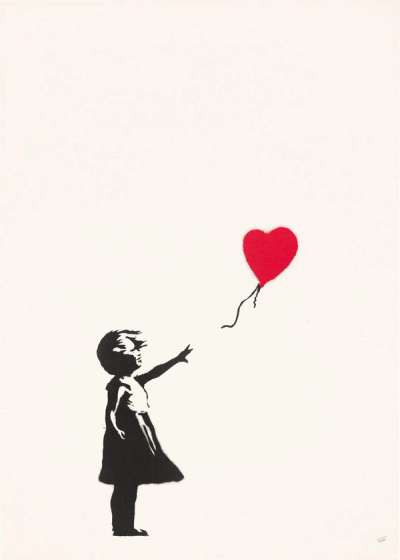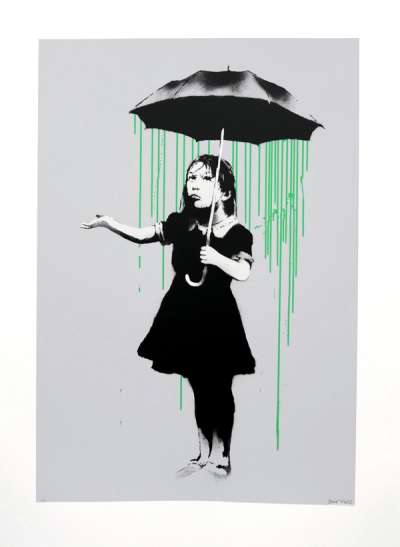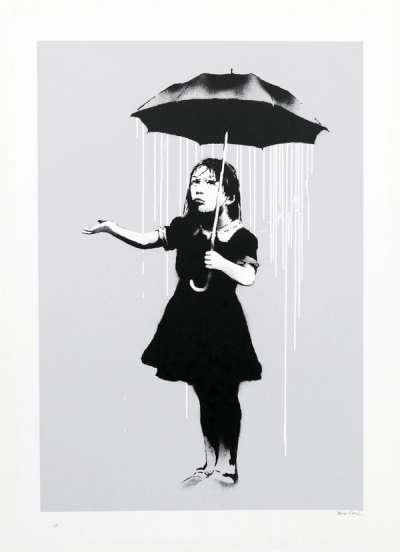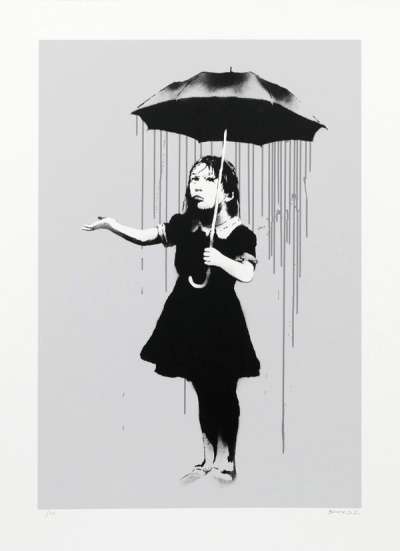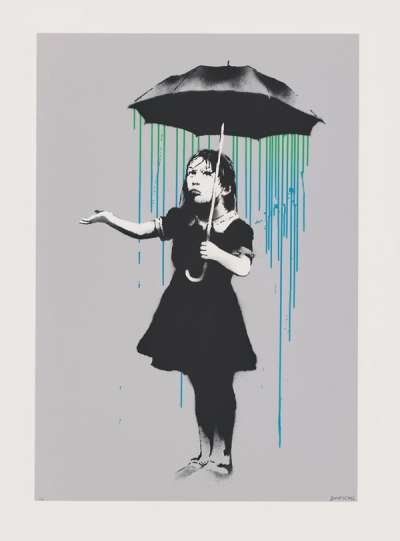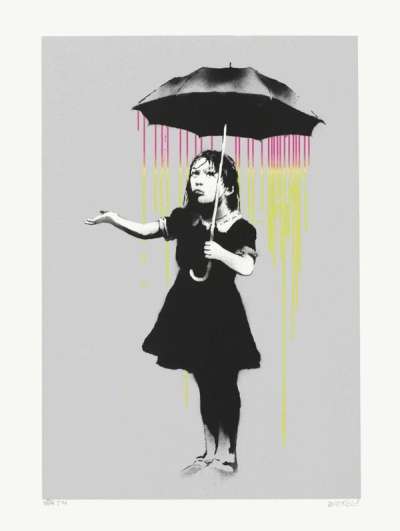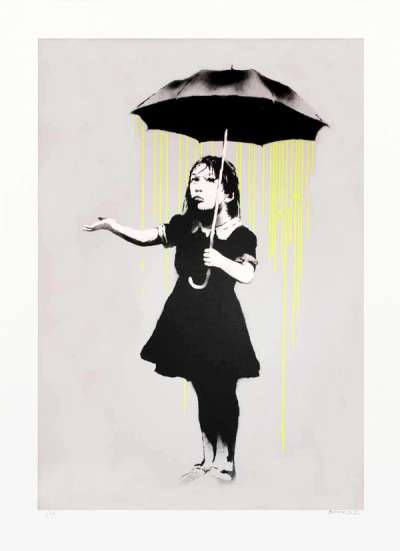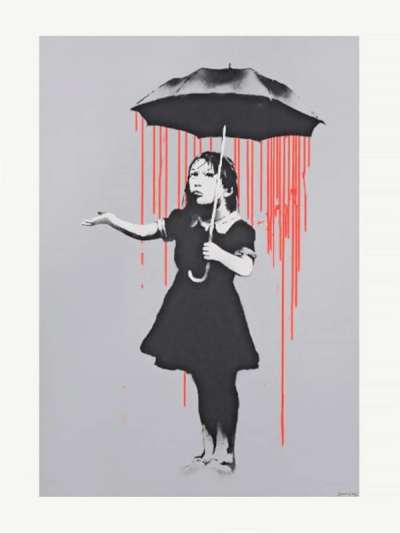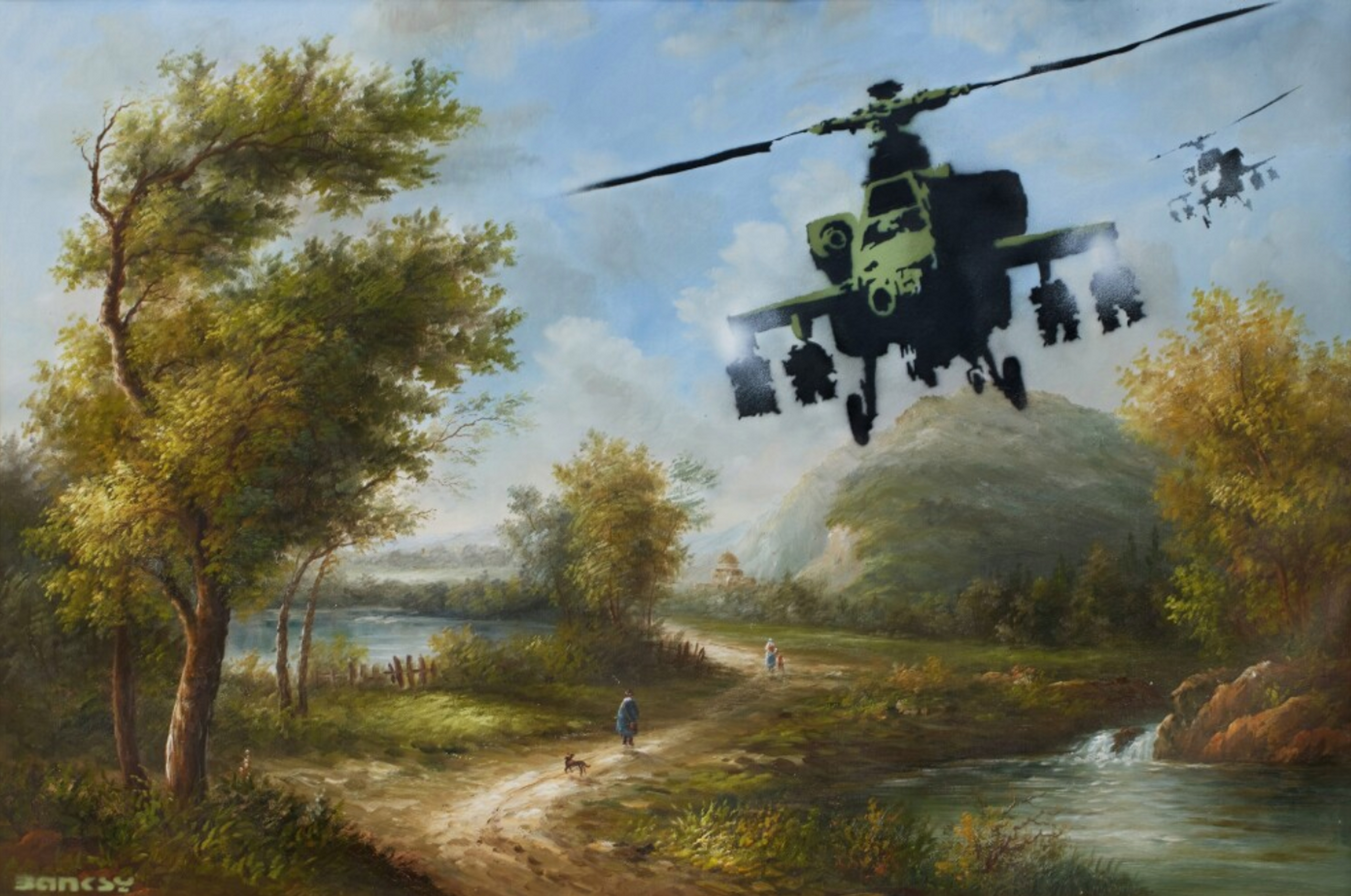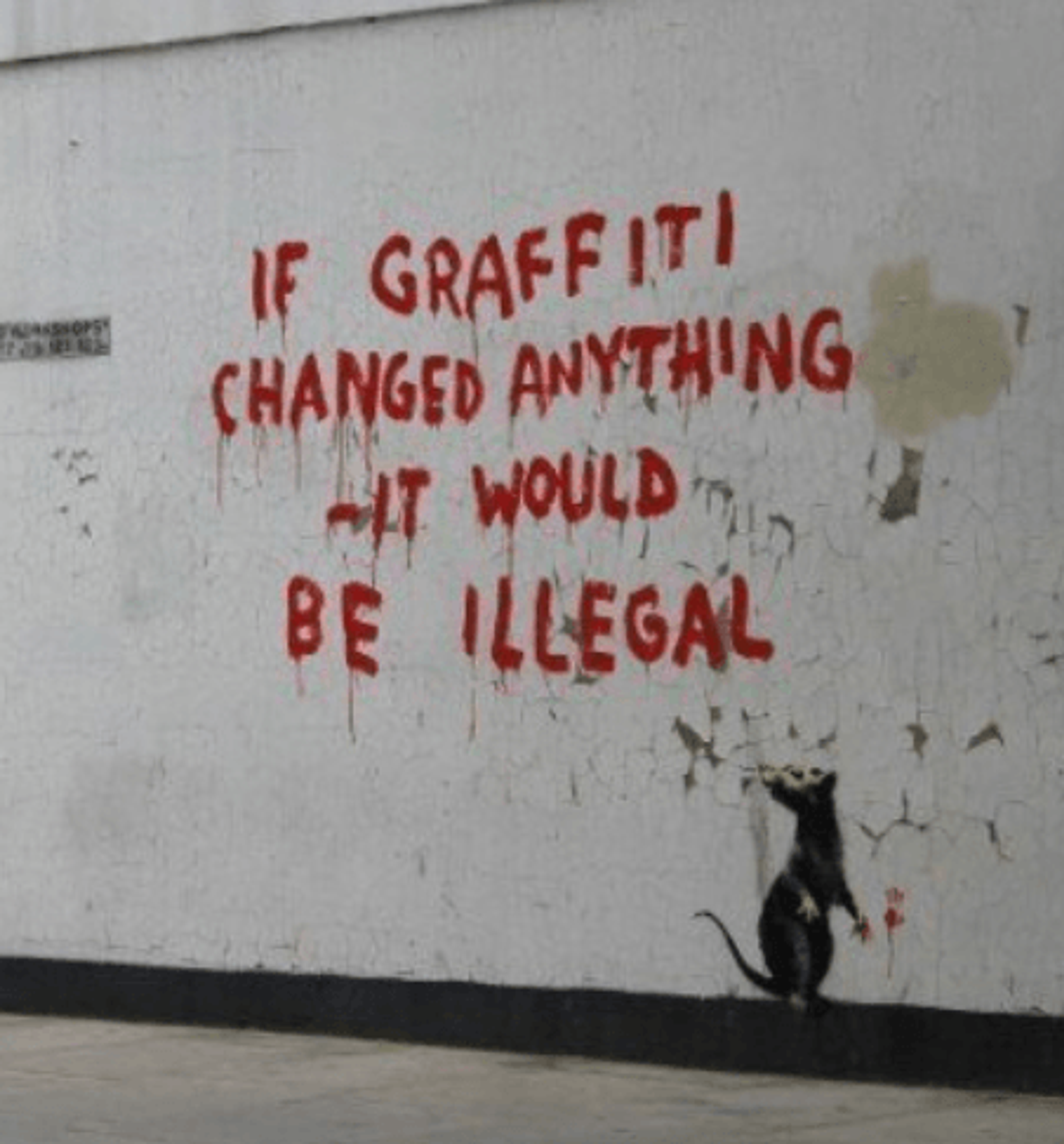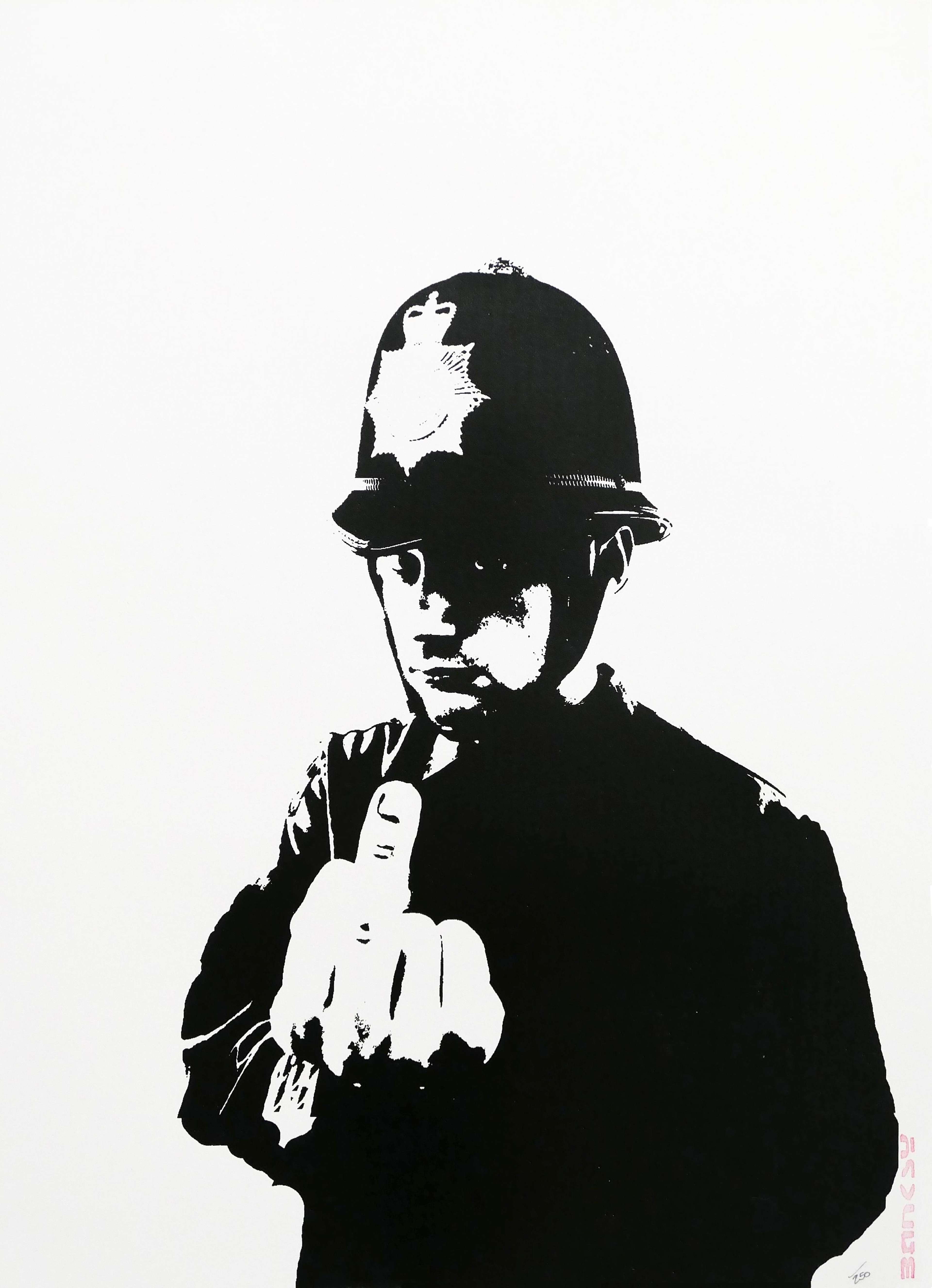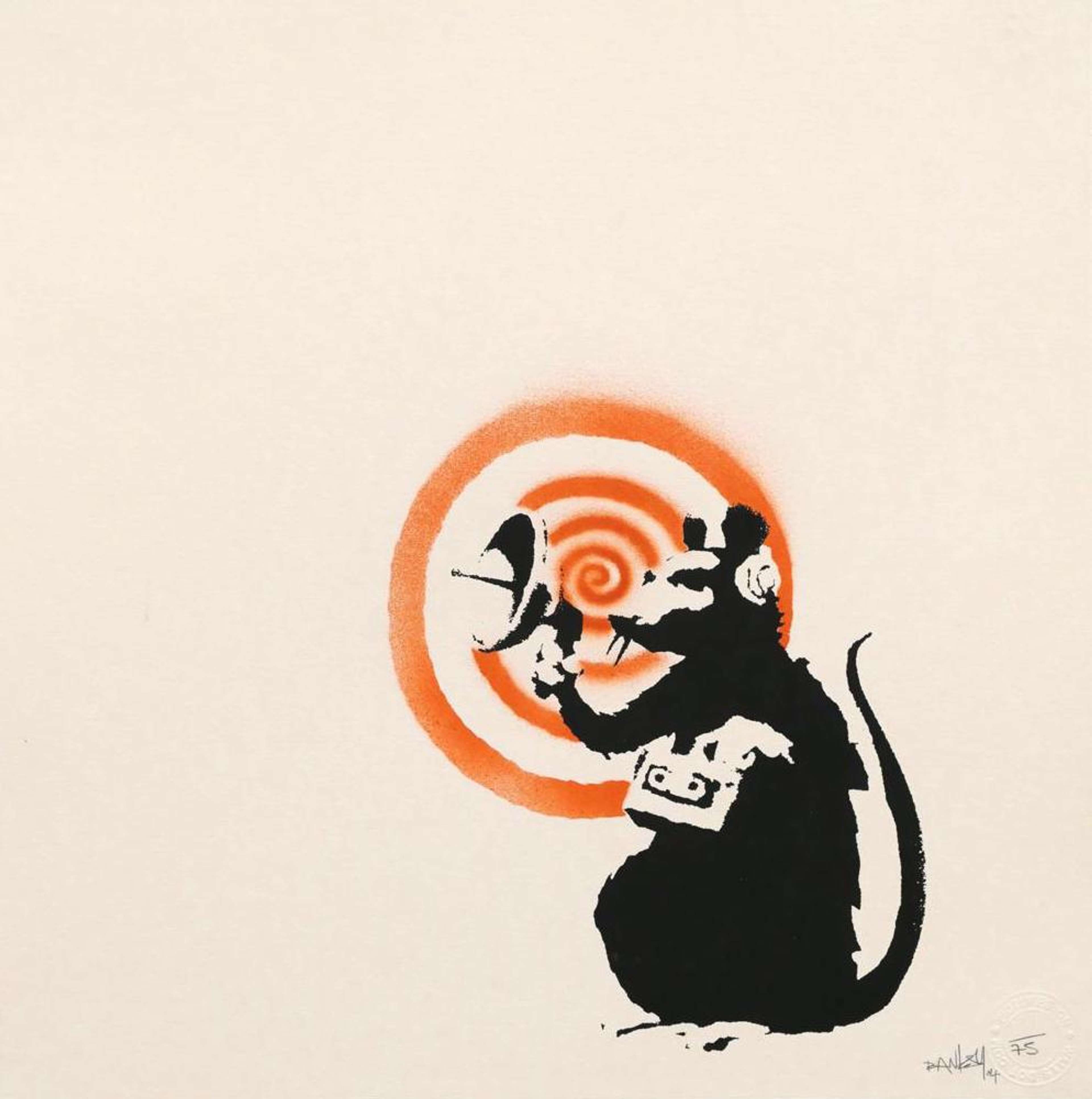 Nola (green / blue rain) © Banksy 2008
Nola (green / blue rain) © Banksy 2008
Banksy
266 works
A Banksy print that has since become synonymous with political commentary and with the artist's own international reputation, here are 10 facts about Nola:
Where is Nola by Banksy located?
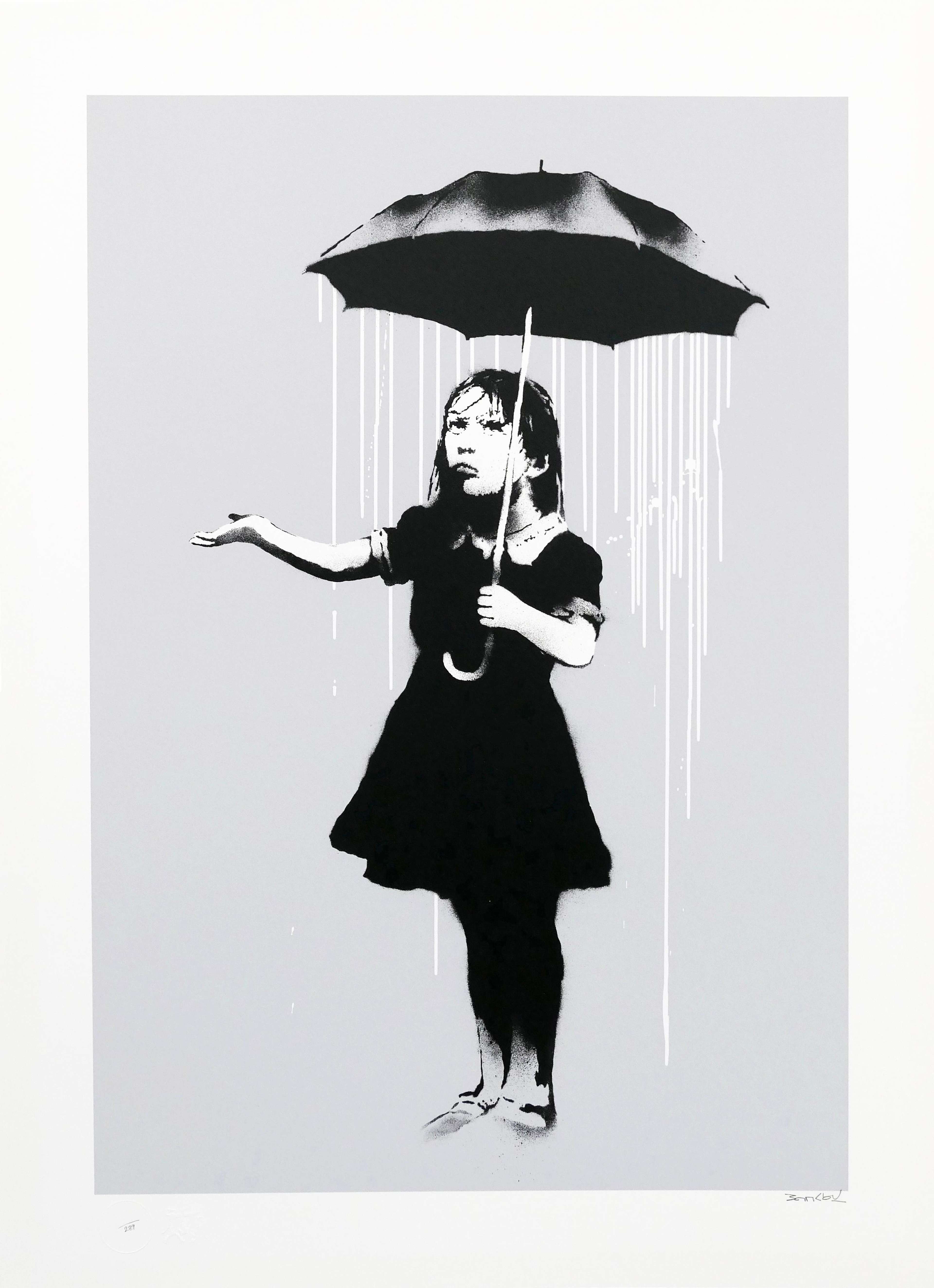 Nola © Banksy 2008
Nola © Banksy 2008Banksy’s Nola mural takes its name from the acronym New Orleans, Louisiana. As the name might let on, Nola, also known as Umbrella Girl or NOLA, first appeared in the historic Marigny district of New Orleans, in the historic Marigny district, in 2008. Banksy had stencilled 14 murals in the city around the same time, all inspired by the devastating events of Hurricane Katrina in 2005. Nola is now one of the most popular and best known from the series.
What does Nola depict?
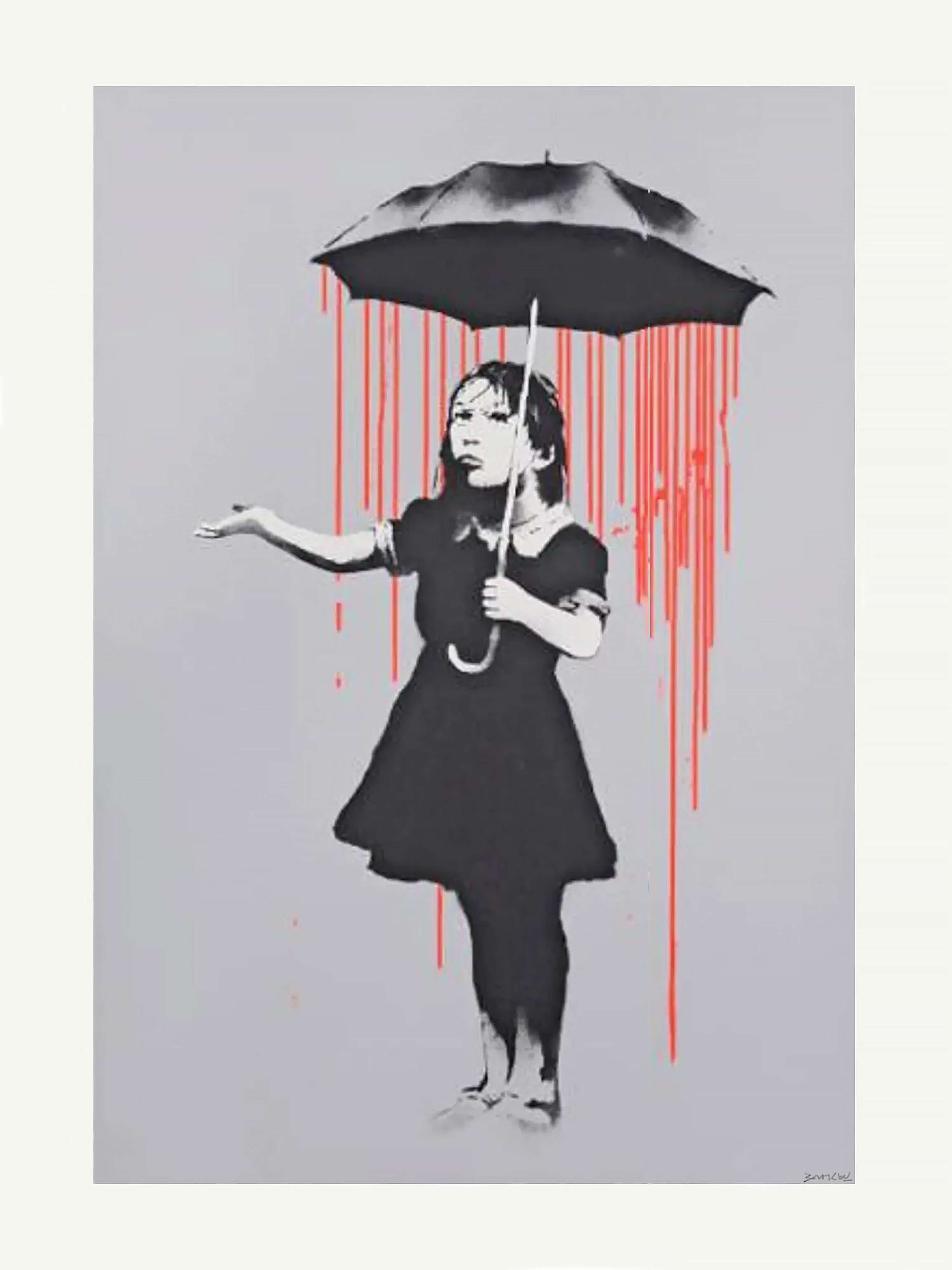 Nola © Banksy 2008
Nola © Banksy 2008Banksy’s Nola shows a young girl standing in the rain beneath an umbrella. As she tentatively stretches one hand out, she realises that the rain is falling from within her umbrella’s canopy and not from the sky.
What does Banksy's Nola mean? Why is it significant?
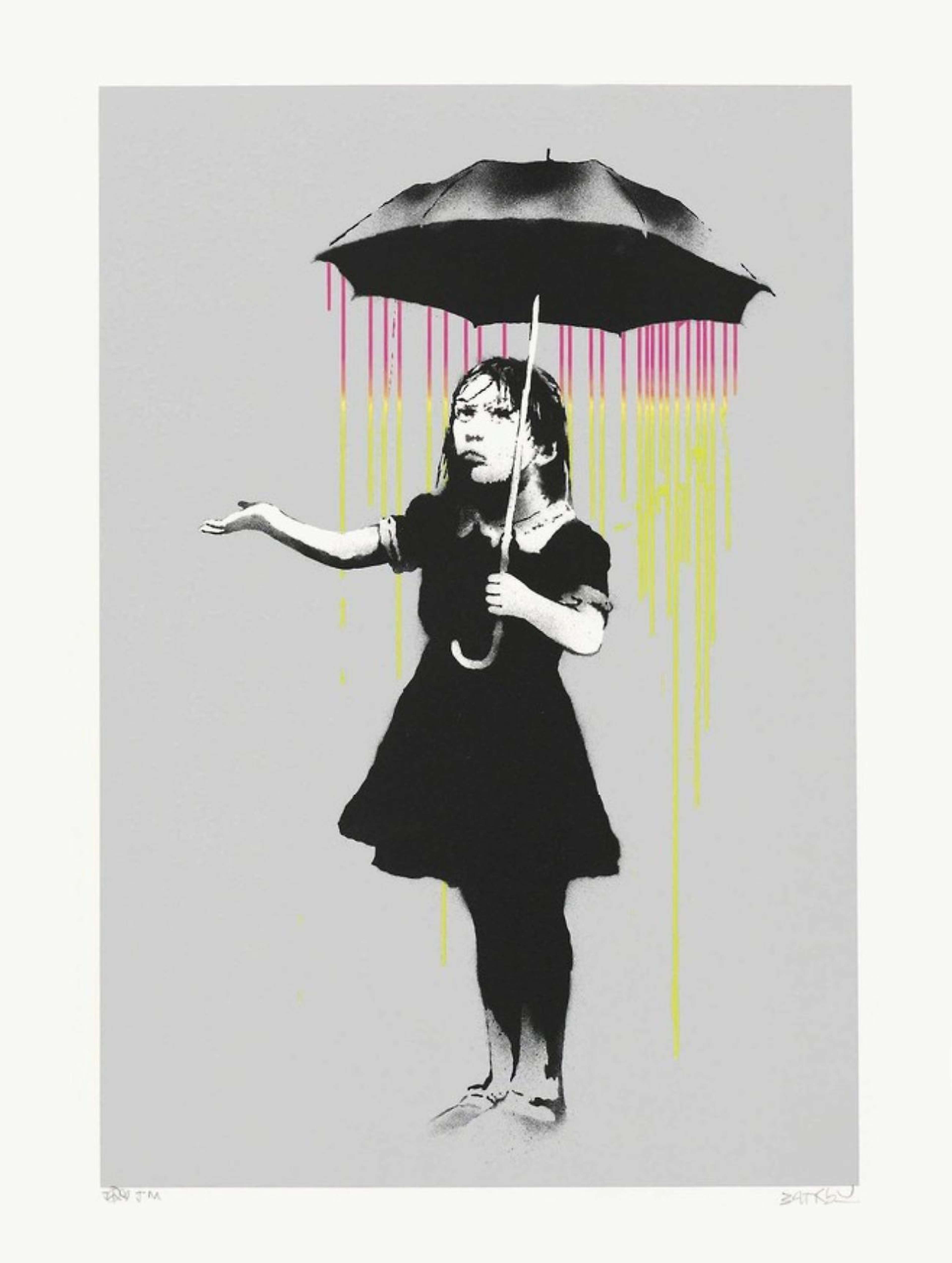 Nola © Banksy 2008
Nola © Banksy 2008Nola translates tragedy into art. Although it had been three years since Hurricane Katrina, New Orleans was still recovering from the event at the time Banksy visited. Over 80% of the city had been flooded, thousands of people had lost their lives, and many more were still missing. The city was so badly affected because the government had purposely built weak flood defences to save money.
Nola is Banksy’s comment on the government’s actions: the umbrella, which is supposed to protect the little girl, is actually the cause of her suffering. This directness makes Nola one of Banksy’s most outspoken political artworks.
Banksy’s other New Orleans murals have variously vanished...
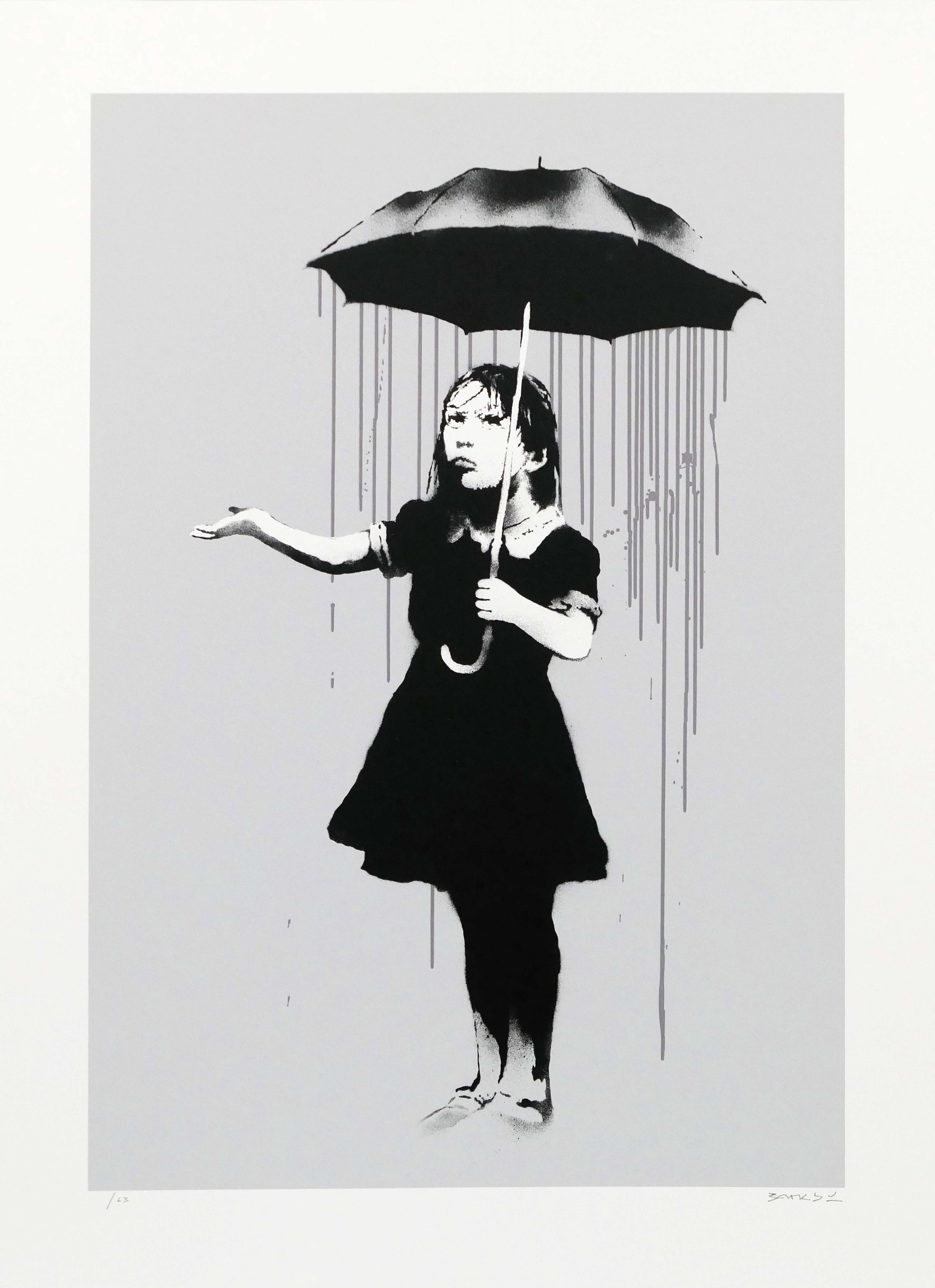 Nola (Grey Rain) © Banksy 2008
Nola (Grey Rain) © Banksy 2008… either destroyed, stolen or placed in museums or galleries.
The now-lost murals include a boy swinging from a lifebuoy; a boy flying a kite in the shape of a fridge; an old man sitting on a rocking chair under a ‘No Loitering’ sign; and a homeless Abraham Lincoln.
But two other Banksy murals, in addition to Nola, from 2008 have survived and are on view. One is a stencil of two soldiers looting electrical goods, which is now on display inside International House Hotel, a boutique in downtown New Orleans. The other stencil The Gray Ghost, depicting a man covering flowers with grey paint, can be found on the side of a building at New Orleans’s Clio and Carondelet Streets.
Nola was first released as a screenprint in 2008
 Nola (green and blue) © Banksy 2008
Nola (green and blue) © Banksy 2008The first Nola editioned prints were released in the same year as the original New Orleans mural. The original colourway featured the girl with white raindrops falling from her umbrella. There are 289 signed prints of Nola (white).
How many colourways are there of Banksy's Nola?
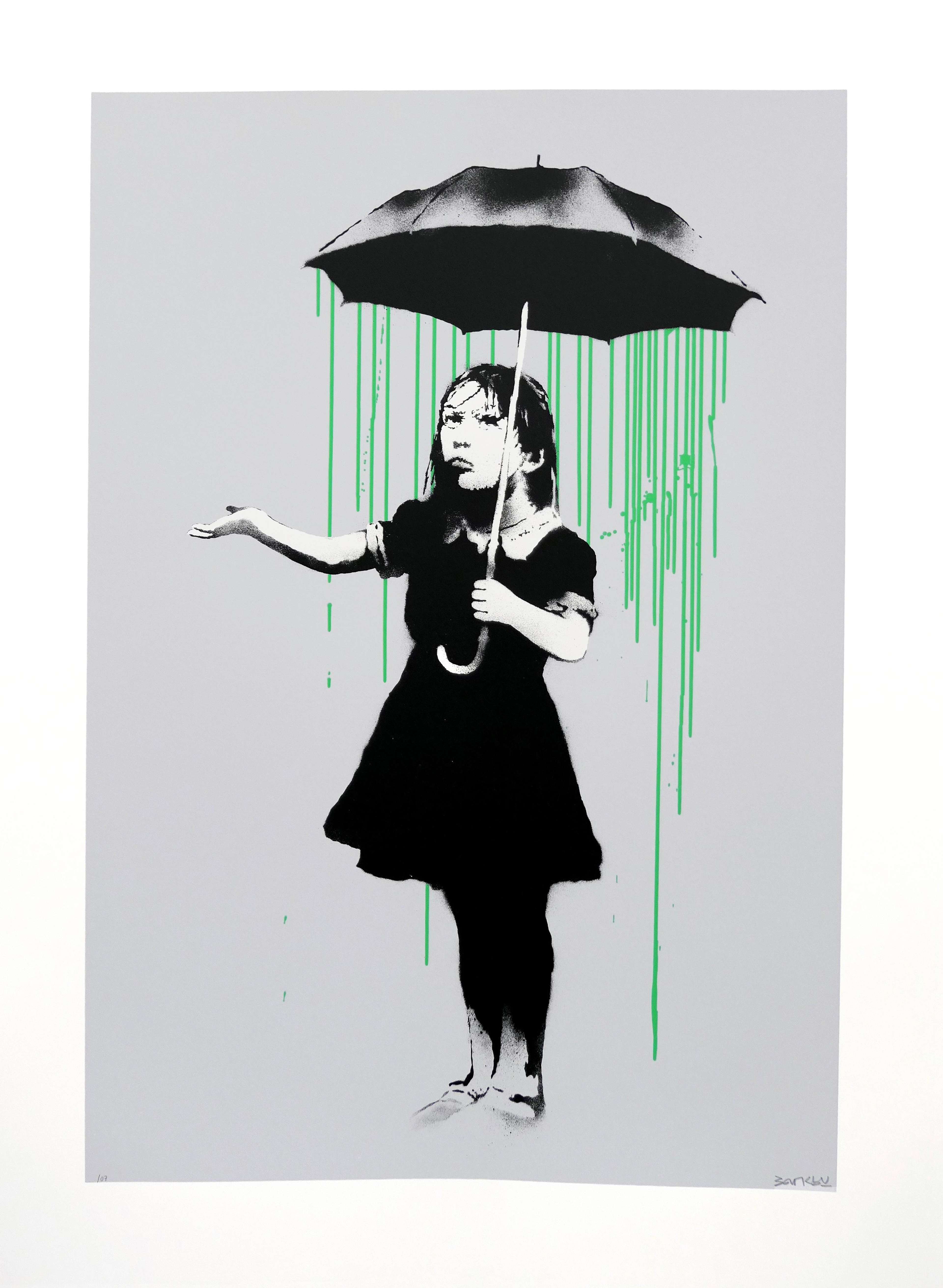 Nola (green rain) © Banksy 2008
Nola (green rain) © Banksy 2008Later in 2008, Banksy released signed editions of Nola in six additional colour variations: Grey Rain, Pink/Yellow Rain, Green Rain, Green/Blue Rain, Orange Rain and, the rarest, Yellow Rain (also known as Neon Rain). This brought the total number of differently coloured versions up to seven.
A Banksy Nola print can sell for six-figures at auction
 Nola (orange) © Banksy 2008
Nola (orange) © Banksy 2008The top price paid for Nola print is £300,000 (£375,000 with buyer’s premium), for a unique proof of Nola (yellow rain) featuring hand-drawn details and a hand-placed red sticker. A standard signed edition of Nola (green rain) fetched £180,000 (£226,800 with buyer’s premium), over three times its high estimate, in September 2020, while a standard signed edition of Nola (White) sold for £120,000 (£150,000 with buyer’s premium) in March 2021.
The original Nola mural is now considered a New Orleans landmark
 Image © Infrogmation of New Orleans via Flickr, CC BY-SA 2.0 / Nola © Banksy
Image © Infrogmation of New Orleans via Flickr, CC BY-SA 2.0 / Nola © BanksySince its creation, Nola has suffered from both vandalism and attempted theft, but steps have been taken to preserve and protect the mural. In 2014, it was covered with plywood and given the protection of a security guard. Today, Nola remains in its original location, shielded behind transparent plexiglass.
Protection did not prevent Nola from being defaced in 2020
In December 2020, vandals cut a hole into the plexiglass protecting Banksy’s Nola and Gray Ghost and tagged “Team Robbo” and “King Robbo” in red paint on them. King Robbo is the late English graffiti artist who infamously feuded with Banksy, after Banksy stencilled over one of his murals from 1985. Although Robbo died in 2014, his fans, as well as critics of Banksy, continue to use his tag to vandalise Banksy’s works.
New Orleans locals talk about how they tried to restore Nola.
The little girl motif features in many of Banksy’s prints
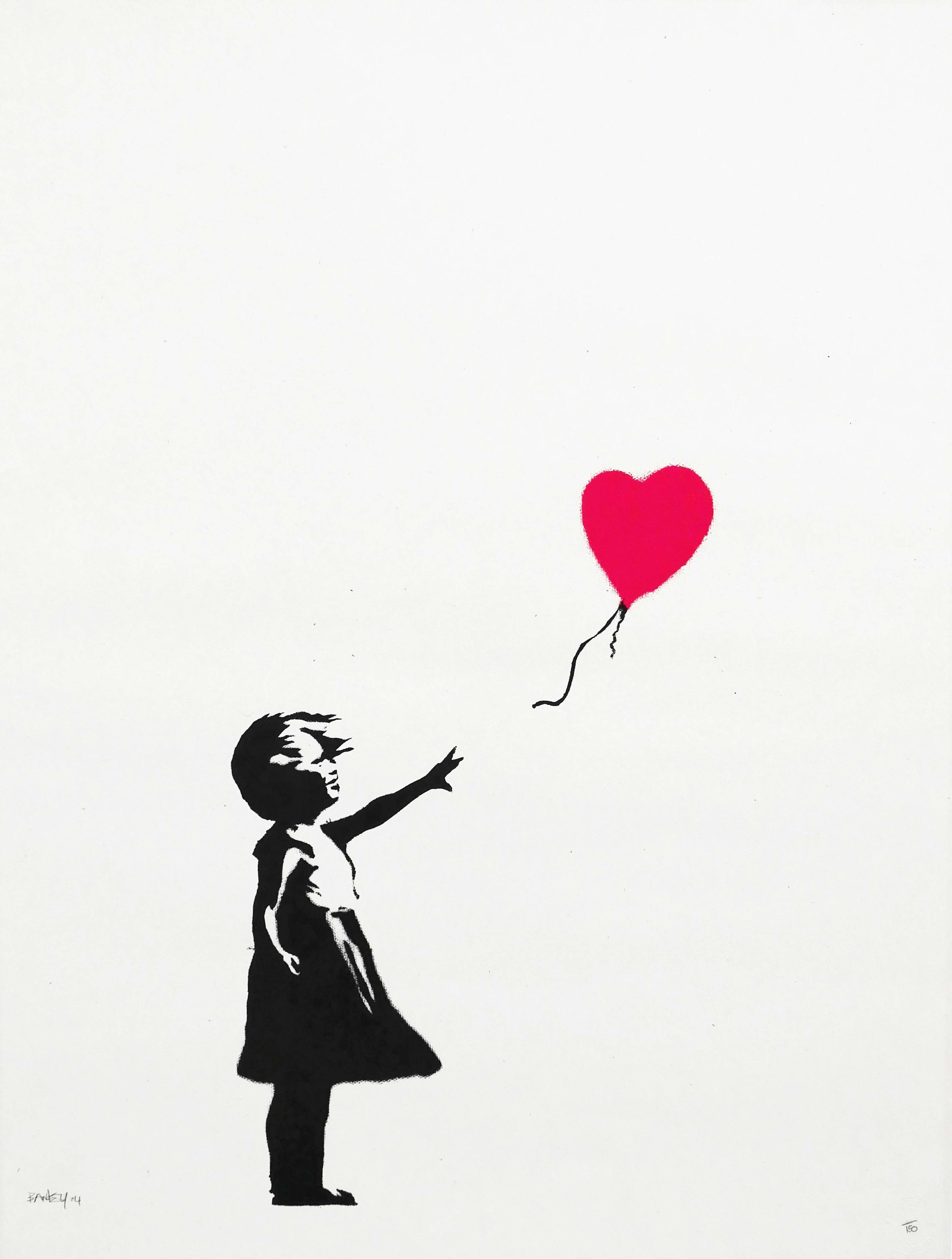 Girl with Balloon © Banksy
Girl with Balloon © BanksyBanksy uses the theme of childhood to contrast the innocence and purity of children with the dangers of war and violence, often inflicted on them by authorities or corporations. Like Nola, his anti-war print Bomb Hugger is a critical response to the government who claim war will protect democracy, rather than harm it. Banksy’s most famous print, Girl With Balloon, is often interpreted as a loss of innocence or, alternatively, a message to keep reaching out – as Banksy wrote next to the original Girl With Balloon mural at London’s Southbank, “There is always hope”.
This artwork is perhaps one of the most powerful of Banksy's artworks of children, given its affinity with nursery rhymes ('Rain, rain go away...') and other forms of childish expression that use storms as metaphors for bad luck. The childish allegory helps to brings into focus the contrastingly literal storm, Hurricane Katrina, through the eyes of the many children who were affected— too young to fully express or understand what was happening, or to help, but still bound to feel terror.

